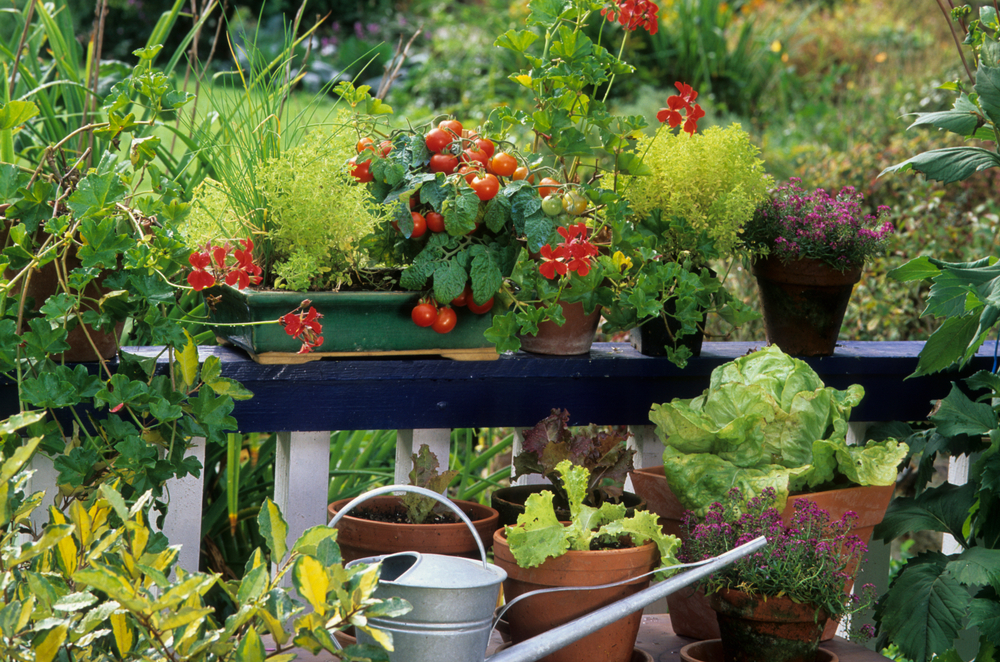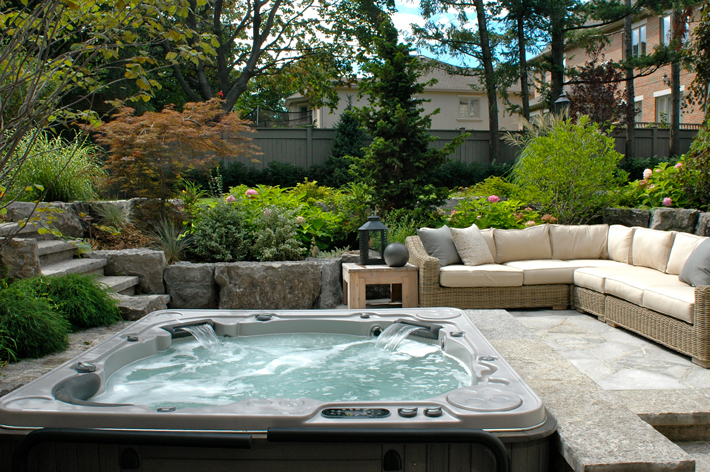Want to transform your balcony into a lush, green oasis? Growing vegetables on your balcony might seem challenging, but with the right tips and tricks, it can be incredibly rewarding. Whether you’re a gardening novice or an experienced enthusiast, this guide will help you make the most of your limited space. We’ll explore innovative container options, essential care routines, and practical solutions for common challenges in balcony vegetable gardening. From choosing the right vegetables to maximizing sunlight and optimizing soil quality, we’ve got you covered.
Key Takeaways
- Choose vegetables that are well-suited for balcony gardening, such as tomatoes, peppers, and herbs, to ensure successful growth in limited space.
- Optimize your growing conditions by providing adequate sunlight, using quality soil, and considering the impact of wind and temperature on your balcony garden.
- Select the right containers and potting solutions, such as lightweight pots with good drainage, to support healthy plant growth and maximize space efficiency.
- Implement a suitable watering system and ensure proper drainage to prevent waterlogging, using self-watering containers or drip irrigation for efficient moisture management.
- Maximize limited space by utilizing vertical gardening techniques, hanging planters, and railing or wall-mounted containers to expand your growing area.
- Care for your balcony garden by regularly monitoring plant health, addressing pests and diseases promptly, and providing necessary nutrients to support vigorous growth.
Choosing the Right Vegetables
Best Varieties
It’s crucial to select the right varieties. Look for vegetable varieties, such as carrots, that are specifically suited for container gardening. Opt for compact or dwarf varieties, especially if you have limited space on your balcony. Researching vegetables that thrive in your climate is essential as well. For instance, if you live in a hot climate, consider heat-tolerant vegetables like cherry tomatoes and peppers.
Companion Flowers
In balcony vegetable gardening, companion flowers can play a vital role in maximizing space and deterring pests. Choose flowers that attract pollinators such as bees and butterflies to benefit your vegetable plants’ growth and yield. Marigolds are an excellent example of companion flowers known for repelling pests while also adding aesthetic appeal to your balcony garden.
Selecting companion flowers based on their compatibility with the chosen vegetables is important too. For instance, planting carrots alongside onions or leeks can help deter carrot flies due to the strong scent emitted by these alliums.
Edible Plants Selection
Researching suitable edible plants for balcony growing conditions is essential when planning your garden. Consider herbs like basil, parsley, and chives which not only thrive in containers but also provide fresh flavors for cooking without taking up much space.
Leafy greens such as lettuce and spinach are great choices too since they don’t require deep soil and can be harvested gradually over time without overcrowding other plants on the balcony.
Small-fruited vegetables like cherry tomatoes, mini bell peppers, and baby eggplants are perfect picks for balconies due to their compact size yet abundant yields throughout the season.
Optimizing Your Growing Conditions
Light Conditions
Understanding the sunlight requirements of different vegetable plants is crucial for successful balcony gardening. For instance, leafy greens like spinach and lettuce thrive in partial shade, while tomatoes and peppers require full sun. Position your plants according to their specific light needs on the balcony. Place sun-loving plants where they can receive direct sunlight for at least 6-8 hours a day, while shade-tolerant ones should be shielded from intense afternoon sun.
Utilize reflective surfaces strategically to optimize light distribution on your balcony. Placing light-colored walls or using reflective materials such as mirrors can help bounce sunlight onto shaded areas, ensuring more even light exposure for your plants.
Assessing Your Space
Taking accurate measurements of the available space on your balcony is essential for effective planning. Identify areas with varying microclimates based on factors like shade patterns, wind exposure, and temperature variations across different parts of the balcony.
Consider utilizing vertical space by hanging or training climbing plants to grow upwards. This not only maximizes space but also creates an aesthetically pleasing green wall effect. Vertical gardening allows you to grow more crops in a limited area while keeping them off the ground where pests might lurk.
Wind and Weight Management
Implementing windbreaks or barriers, such as trellises or mesh screens, can protect delicate plants from strong winds that could damage their foliage or hinder growth. Placing wind-sensitive plants behind sturdier vegetation can offer natural protection against harsh gusts.
Opt for lightweight materials such as plastic or fiberglass instead of heavier options like ceramic or concrete. Lightweight containers are easier to move around and reduce strain on your balcony’s structure due to excessive weight load.
To prevent top-heavy plants from tipping over during windy conditions, secure them with stakes driven into the soil near their base or use plant ties attached to nearby railings or structures for added stability.
Containers and Potting Solutions
Selecting Pots
Selecting the right pots is crucial. Choose pots with adequate drainage holes to prevent waterlogging, which can harm the plants. Consider the material, size, and shape of pots based on your plant’s needs. For example, larger plants like tomatoes require bigger containers while herbs can thrive in smaller ones. Opt for lightweight but durable pots suitable for balcony use as they are easier to move around when needed.
When choosing a pot for your vegetables, consider its material carefully. Terracotta pots are porous and allow better air circulation but may dry out quickly, requiring more frequent watering. Plastic or resin containers retain moisture better but may not provide adequate airflow to the roots if not properly designed with enough drainage holes.
Potting Mix Selection
The next step in successful balcony vegetable gardening is selecting the right potting mix. It’s essential to choose a well-draining potting mix tailored to vegetable cultivation as proper soil structure is vital for healthy plant growth. Adding organic matter such as compost or perlite can improve soil structure by enhancing drainage and aeration.
Avoid using heavy garden soil straight from your yard as it tends to be too dense and may impede proper drainage in containers. Garden soil might contain weed seeds or diseases that could affect your balcony garden negatively.
Railing Planters
Railing planters offer an excellent solution for maximizing vertical space on balconies where floor space might be limited. When considering railing planter options, ensure their secure installation onto the balcony railings for safety purposes; this will prevent accidents caused by falling planters.
Select railing planters that complement your balcony’s aesthetic while also serving practical purposes — some have built-in reservoirs that help maintain consistent moisture levels in the soil without overwatering or underwatering your vegetables.
Watering Systems and Drainage
Watering Techniques
Developing a consistent watering schedule is crucial. Different plants have varying water needs, so understanding these requirements is essential. Using a watering can or hose with a gentle spray attachment helps prevent soil erosion and damage to delicate seedlings. Monitoring the soil’s moisture levels regularly ensures that you avoid overwatering, which can lead to root rot, or underwatering, which can cause wilting and stunted growth.
Drainage Solutions
Elevating pots on pot feet or bricks enhances drainage by allowing excess water to escape freely from the container. This prevents waterlogging, which can suffocate plant roots. Another effective solution is installing self-watering containers with built-in drainage systems. These containers collect excess water in a separate reservoir, keeping the soil consistently moist without risking oversaturation. Clearing clogged drainage holes periodically is vital for preventing standing water that could attract pests and promote fungal growth.
Watering Systems Types
Exploring drip irrigation systems presents an efficient way of delivering water directly to the base of each plant while minimizing evaporation and ensuring optimal absorption. This method also reduces the risk of leaf diseases caused by overhead watering practices common in balcony setups. Self-watering containers with reservoirs provide a reliable supply of moisture for plants throughout the day without constant manual intervention. Installing a timer-based watering system automates care routines based on predetermined schedules, making it ideal for those who may be away from their balcony garden frequently.
Maximizing Limited Space
Innovative Ideas
Incorporating trellises or vertical supports can be a game-changer. These structures allow climbing vegetables like beans and cucumbers to grow upward, maximizing the use of outdoor space. Hanging baskets and tiered shelving are also excellent options for adding extra planting areas without taking up valuable ground space.
Experimenting with creative upcycled containers is another innovative idea for balcony vegetable gardening. By using items like old buckets, wooden crates, or even plastic bottles, you can create a unique garden display while efficiently utilizing the available size.
Vertical Gardening
Utilizing wall-mounted planters or pocket gardens is an effective way to make the most of wall space in balcony gardening. These planters not only add greenery but also serve as decorative elements. Training vining vegetables to grow upward using trellises or netting is a smart technique that optimizes vertical growth and conserves precious floor area.
Optimizing unused wall space with modular vertical gardening systems allows for the cultivation of various plants in a compact manner. This method seamlessly integrates into small balconies while providing ample room for different crops.
Space-Saving Crops
Growing compact vegetables such as cherry tomatoes and mini peppers is essential when dealing with limited space. These varieties thrive in smaller containers and yield bountiful harvests despite their modest requirements.
Cultivating salad greens and herbs in shallow trays or window boxes further maximizes the usage of available size, making them ideal choices for balcony vegetable gardens. Hanging planters are perfect for growing strawberries or trailing herbs without encroaching on walking areas.
Caring for Your Balcony Garden
Simplifying Maintenance
Simplifying maintenance is essential. Grouping plants with similar care needs together makes watering and fertilizing more efficient. For example, herbs like basil and parsley thrive with consistent moisture, while tomatoes require well-drained soil. By grouping them accordingly, you can meet their specific needs without over or under-caring for any.
Implementing mulching in your containers not only conserves moisture but also suppresses weeds that compete with your veggies for nutrients. This simple step reduces the frequency of watering and weeding while maintaining a healthy growing environment.
Regularly inspecting your plants for pests and diseases is crucial in preventing widespread infestations or infections. Early detection allows you to take prompt action before the problem escalates, potentially saving your entire garden from devastation.
Smart Practices
In balcony vegetable gardening, smart practices such as crop rotation are vital to maintain soil fertility and prevent nutrient depletion. Rotating crops annually helps balance the demand for specific nutrients by different plant families, reducing the likelihood of deficiencies in the growing medium.
Integrating organic fertilizers into the soil as needed ensures that your vegetables receive essential nutrients without overwhelming them with synthetic chemicals. Organic options like compost or fish emulsion provide a slow release of nutrients, promoting steady growth without risking fertilizer burn.
Practicing proper sanitation by regularly cleaning pots and removing dead plant material minimizes disease spread among your crops. Good hygiene prevents pathogens from lingering on surfaces or infecting new seedlings, ultimately preserving a healthier growing environment.
Common Mistakes
When caring for your balcony garden, avoid overcrowding plants in containers as this leads to competition for resources like water and sunlight. Overcrowding can stunt growth and increase susceptibility to diseases due to poor air circulation among densely packed foliage.
Prevent underestimating sunlight requirements which often results in poor growth or leggy plants struggling to reach adequate light sources. Understanding each vegetable’s sunlight needs is crucial; some may thrive with partial shade while others demand full sun exposure throughout the day.
Refrain from overfertilizing as excessive nutrients can harm plant health rather than promote vigorous growth. Too much fertilizer can lead to salt buildup in the soil which damages roots and disrupts water uptake by plants.
Enhancing Balcony Garden Design
Garden Floor Design
To enhance the visual appeal of your balcony garden, consider incorporating decorative pebbles or mulch around the pots. This not only adds a polished look to the space but also helps in maintaining moisture levels and preventing weed growth. By adding this simple feature, you can elevate the overall aesthetic of your balcony while keeping it low-maintenance.
Another way to spruce up your apartment patio garden is by using aesthetically pleasing containers for your plants. Opt for containers that complement the style and color scheme of your balcony. These could be vibrant ceramic pots, wooden planters, or even hanging baskets that add a pop of color and personality to your outdoor space.
Aesthetic Containers
Choosing visually appealing containers for your plants is essential in creating an eye-catching balcony garden. Selecting containers that match the theme or ambiance you want to create on your balcony will help tie everything together seamlessly. For example, if you’re going for a cozy rustic vibe, consider using weathered wooden crates as planters; if modern elegance is more your style, sleek metallic or monochromatic pots might be more suitable.
In addition to choosing attractive individual containers, it’s important to consider how they work together as part of a whole picture. Ensure there’s visual harmony among all the different elements on display – from planters and furniture to decorative accents like lanterns or wind chimes – so that everything comes together cohesively.
Seasonal Considerations for Balcony Gardens
Seasonal Planting Ideas
Balcony vegetable gardening can be a rewarding experience throughout the year. During the spring and summer, consider planting seasonal vegetables such as tomatoes, peppers, cucumbers, and herbs like basil and cilantro. These warm-season plants thrive in the ample sunlight and warmer temperatures. As fall approaches, switch to cool-weather crops like lettuce, spinach, kale, and radishes. They are more resilient to lower temperatures and can withstand mild frost.
When winter arrives, opt for cold-hardy vegetables including carrots, beets, turnips, and certain varieties of lettuce that can endure chilly conditions. You may want to grow microgreens indoors during the colder months since they don’t require extensive space or direct sunlight.
Weather Protection Strategies
To protect your balcony garden from extreme weather conditions such as heavy rain or strong winds,consider using protective coverings when necessary. For instance,installing a canopy or awning over your balcony can shield your plants from excessive rainfall while still allowing them to receive adequate light. You could also use windbreaks like mesh screens or bamboo fencing to safeguard delicate plants from harsh gusts of wind.
During hot summers,employ shade cloth or umbrellas to provide relief from scorching sun rays that might otherwise damage your plants. Similarly,using frost cloths or row covers in winter will help insulate your vegetables against freezing temperatures.
Year-Round Harvesting Tips
Even with limited space on a balcony,you can enjoy a continuous harvest throughout the year by practicing succession planting, which involves sowing new seeds every few weeks so that you have a steady supply of fresh produce at different stages of growth.
For example,you could plant one batch of lettuce seeds this week,and then another batch two weeks later.This way,you’ll have an ongoing rotation of mature lettuces ready for harvesting without overwhelming yourself with too much at once.Additionally,maintaining proper care,such as regular watering,fertilizing,and pest control,is crucial for ensuring consistent yields regardless of the season.
Conclusion on Balcony Vegetable Gardening
Final Remarks
You’ve now got the lowdown on balcony vegetable gardening. From selecting the right veggies to nailing the growing conditions, choosing the containers, and mastering watering systems, you’re all set. Don’t forget to jazz up your balcony garden with some design flair and keep seasonal changes in mind. Now go get your hands dirty and turn that balcony into a thriving veggie haven!
So, what are you waiting for? Grab those gardening gloves, pick up some seeds, and let’s turn that balcony into a green paradise! Happy gardening!
Frequently Asked Questions
What are the best vegetables for balcony gardening?
You can grow a variety of vegetables on your balcony, including tomatoes, peppers, lettuce, herbs like basil and parsley, and compact varieties of cucumbers and zucchinis. Choose plants that suit your climate and sunlight conditions.
How can I optimize the growing conditions for my balcony garden?
Ensure your plants receive adequate sunlight by positioning them strategically. Use high-quality potting soil to provide essential nutrients. Consider using trellises or stakes to support climbing plants and maximize space.
What are the best containers and potting solutions for balcony vegetable gardening?
Opt for lightweight yet durable containers made of materials like plastic or fiberglass. Ensure they have proper drainage holes to prevent waterlogging. Use a well-balanced potting mix that retains moisture but also allows good airflow.
What watering systems work best for balcony gardens?
Consider self-watering containers or drip irrigation systems to maintain consistent moisture levels without overwatering. Check the soil regularly with your finger to gauge when it’s time to water again.
How can I care for my balcony garden effectively?
Regularly inspect your plants for pests or diseases and address any issues promptly. Prune as needed to promote healthy growth. Keep an eye on nutrient levels in the soil and feed your plants as necessary.






